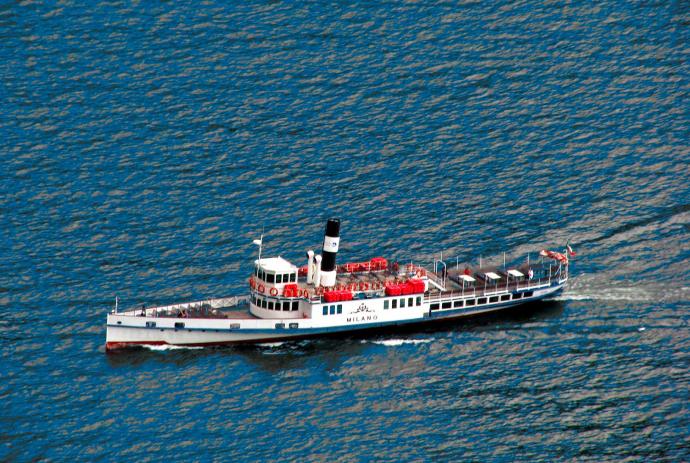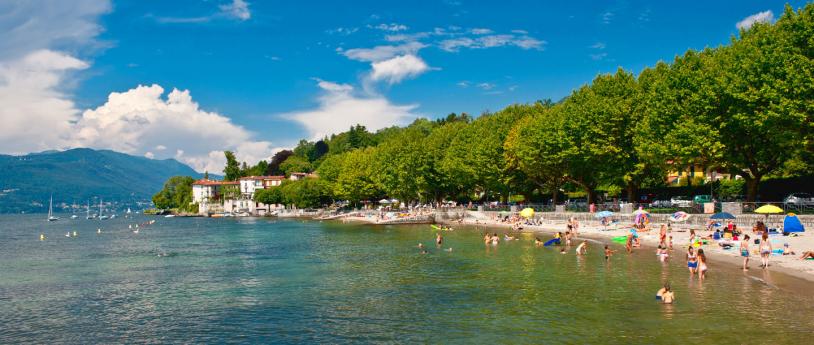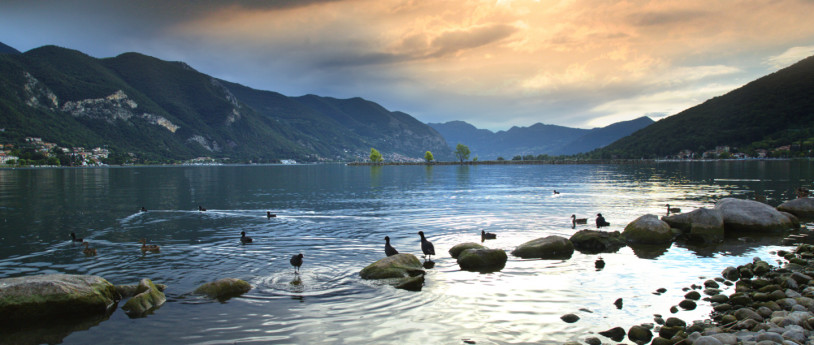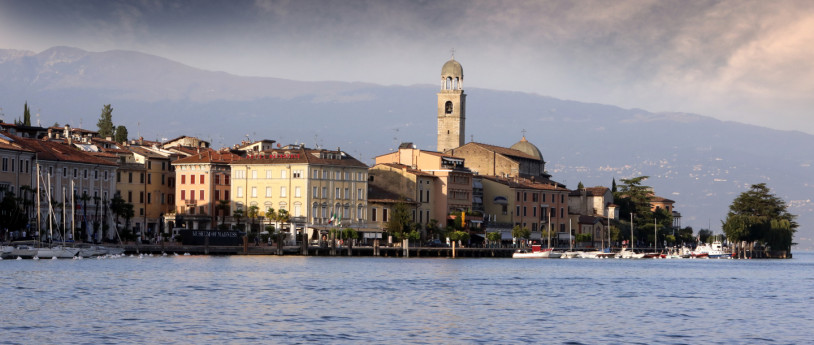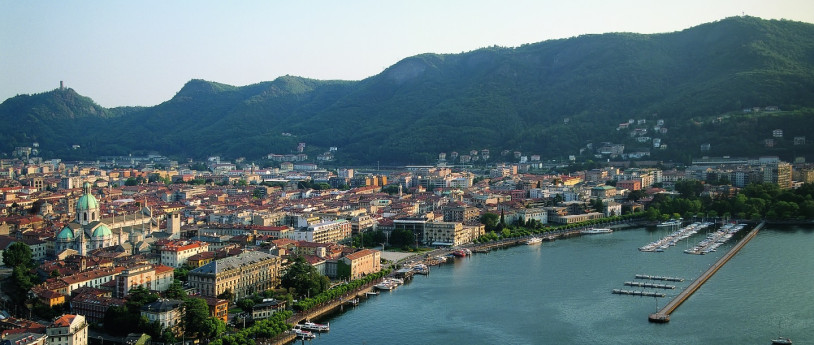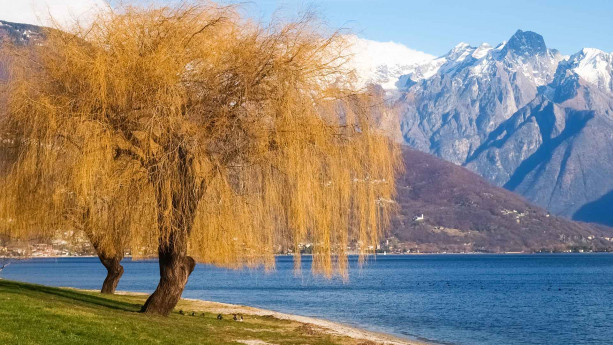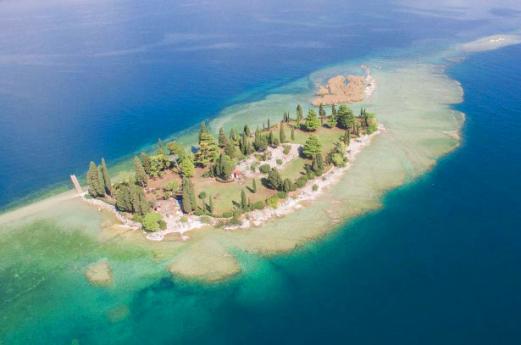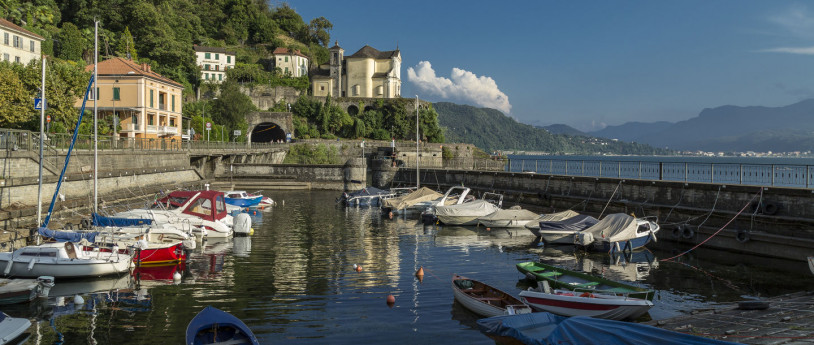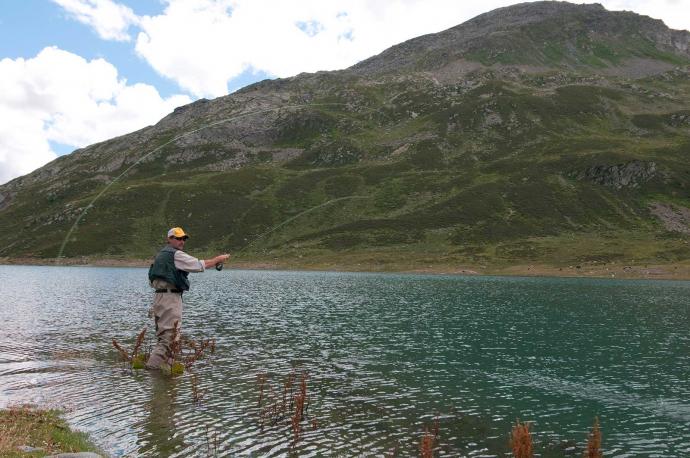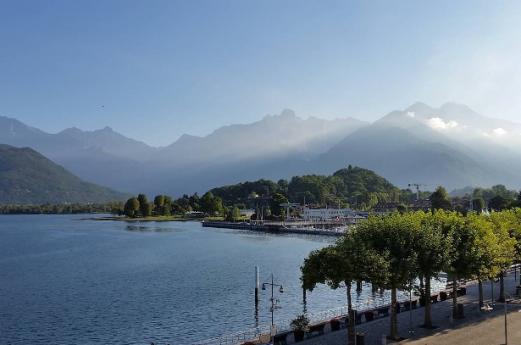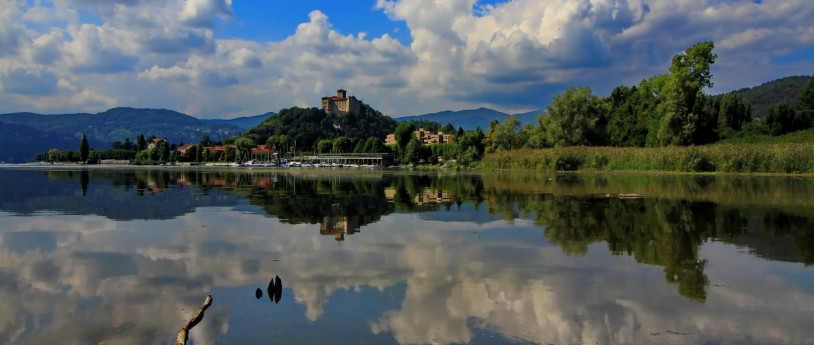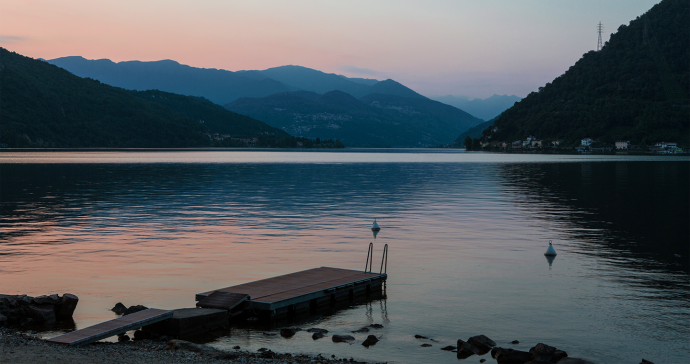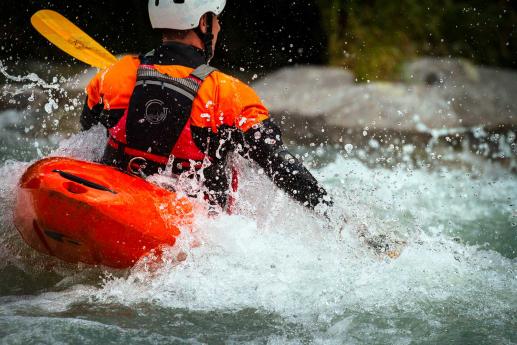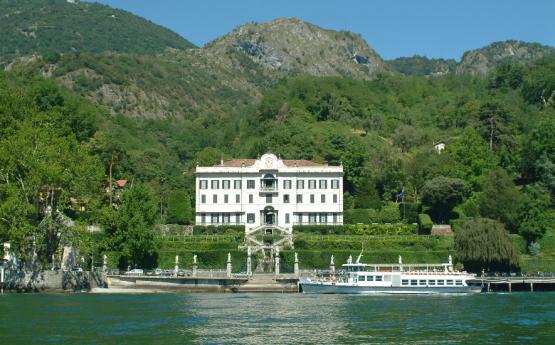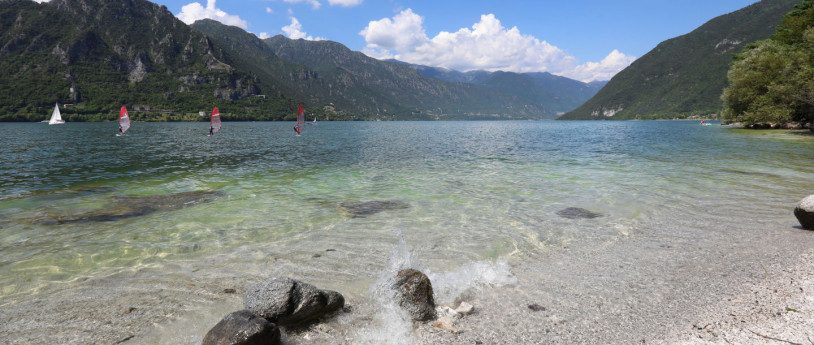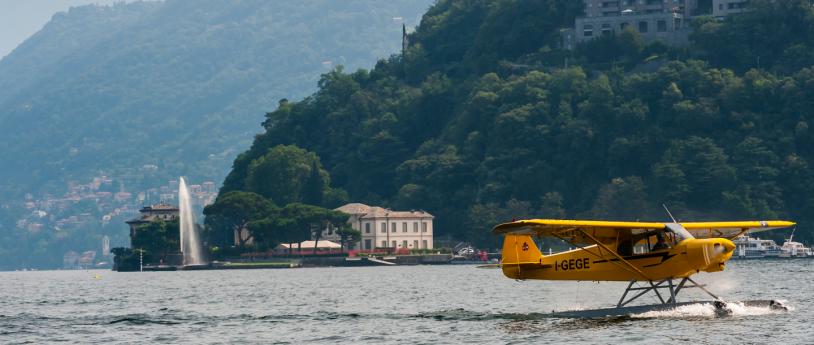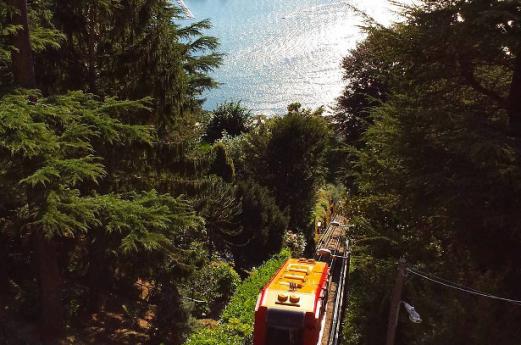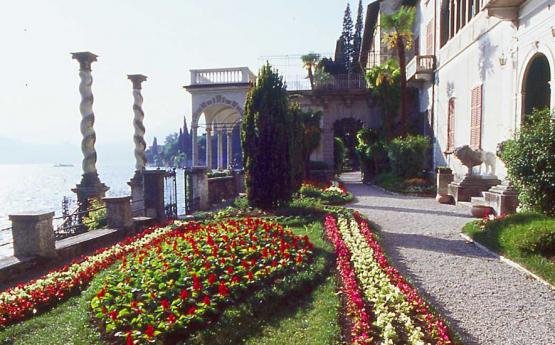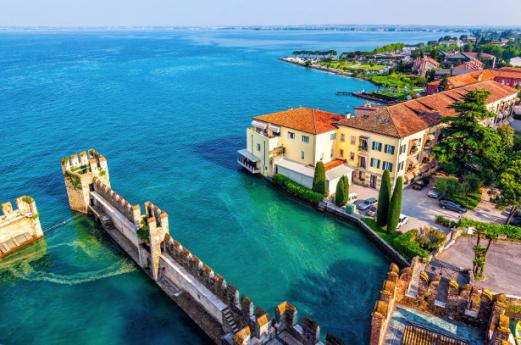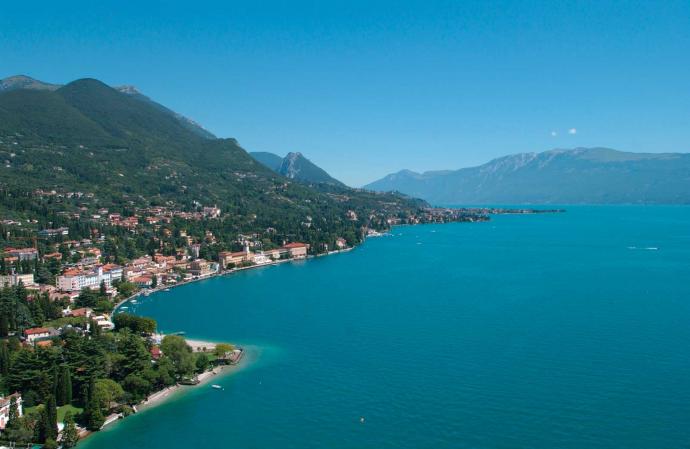- Lakes
Lago Maggiore Old stories
With its five factory buildings, built between the twelfth and seventeenth century, the Rocca di Angera stands guardian of the Lake Maggiore.
Comprising the Torre Castellana tower, the Ala Scaligera and Ala di Matteo Visconti wings with the splendid Sala di Giustizia (Room of Justice) decorated with thirteenth- and fourteenth-century frescos, the Torre di Giovanni Visconti tower, the Ala dei Borromeo wing, this fortification has belonged to the Borromeo family since 1449. Open to the public are the Sale Storiche
(Historic Rooms), embellished by recent installation of the Sala delle Maioliche (Majolica Room), an extraordinary collection of three hundred very rare pieces, and the gardens, rebuilt following ancient medieval codes. The Museum of Dolls and Toys is a must-visit, with over a thousand dolls in wood, wax, papier- mâché, porcelain, biscuit, compounds and fabric from the eighteenth century to date.
The origins of methane
One of the last examples of flooded forests in Lombardy, the Oasi della Bruschera alternates stretches of water with paths through trees and rushes. White lilies grow everywhere and walkers will come across rare flowers like the marsh violet. Home to water birds, including mallards, moorhens and kingfishers, this is the perfect destination
for birdwatchers. Its birdwatching towers are also useful for those wanting to enjoy an unusual view of Lago Maggiore. Isolino Partegora is between Bruschera and the Angera bank, covered only by poplars and surrounded by marsh reeds. In a boat with friends in 1776, Alessandro Volta noticed air bubbles rising up from the bottom. He took a sample of the water and discovered methane.
A ring of furnaces
The land here is dotted with the well-preserved furnaces of Ispra, examples of industrial
archaeology. Limestone was extracted from the banks of Lago Maggiore for the production of lime as far back as the Middle Ages. A part of these very unusual buildings has been converted into private residential units. A 5-kilometre path, steep in parts with others at water level, comes close to some of these homes, offering views of the woods and the lake.
Erratic boulders
A gigantic boulder of serpentine rises out of the waters of Lago Maggiore near Ranco. Called Sasso Cavallaccio, this is a natural monument, an erratic boulder in the shallow, marshy waters of the gulf of Quassa. We are in the only extended stretch of north-facing open coast in the whole of Verbano, where large amounts of moraine materials deposited during the quaternary glaciations. This unusual landscape, with its very
shallow sandy lake bottom, home to a wealth of almost five hundred botanical species, has been the Park of the gulf of Quassa since 2010. There is another exceptional erratic boulder in Sesto Calende. In green serpentine, the Sass de Preja Buia ci sembra che il testo in italiano sia scorretto is covered with shallow dips, engravings that would seem to indicate a Celtic place of worship.
The legacy of Golasecca
Pottery jars, metal ornaments and also coral, amber and other fine materials. Plus the Tomb of the Tripod (late six century B.C.), a female sepulchre with a rich dowry of various ornaments and the neck of a glass bearing two inscriptions, rare testimony to an Italic alphabet deriving from the Etruscan one and called the "alphabet of Lugano". The ancient civilisation of Golasecca, which settled between western Lombardy and eastern Piedmont in the Iron Age, left many traces of its existence that can today be admired in the Sesto Calende Museum of Archaeology. 800 exhibits tell the history of this land from the third millennium B.C. through to the Middle Ages. There is also a very interesting section of fossils from Cheglio di Taino, which includes various species of animals and plants from the Pleistocene Era.
5 reasons for
1. Santuario della Madonna della Riva shrine, Angera. 27 June every year sees celebration of the anniversary of the miracle in 1657, when a fresco of the Virgin Mary on the wall of a house dating back to in 1443 seemed to exude blood. The traditional procession of illuminated boats takes place on the first Sunday in July.
2. The Collegiata di Castiglione Olona. A fragment of Tuscany that landed in Lombardy thanks to Cardinal Banda Castiglioni, who embellished this town with palazzos, churches, schools and charitable buildings. The most important complex comprises the collegiate church and baptistery, with frescos by Masolino da Panicale.
3. Parco di Taino park. A public park for compensation, reflection, pausing and contemplation. This is how Gio Pomodoro described his project in 1991. His sculpture "Il
Luogo dei quattro punti cardinali" (Place of the four cardinal points) stands in the centre of the park.
4. Typical Angera products. Honey —wildflower, acacia and chestnut— grappa from the Rossi d’Angera distillery, savoured by heads of state, ministers and popes since 1847 and also wine, produced here since medieval times.
5. Museum of Plastic Art, Castiglione Olona. The first museum of arts applied to plastic in Italy is to be found in the frescoed rooms in fourteenthcentury Palazzo dei Castiglioni in Monteruzzo. It houses over fifty works from the seventies, by Italian and international artists, from Man Ray to Enrico Baj.
